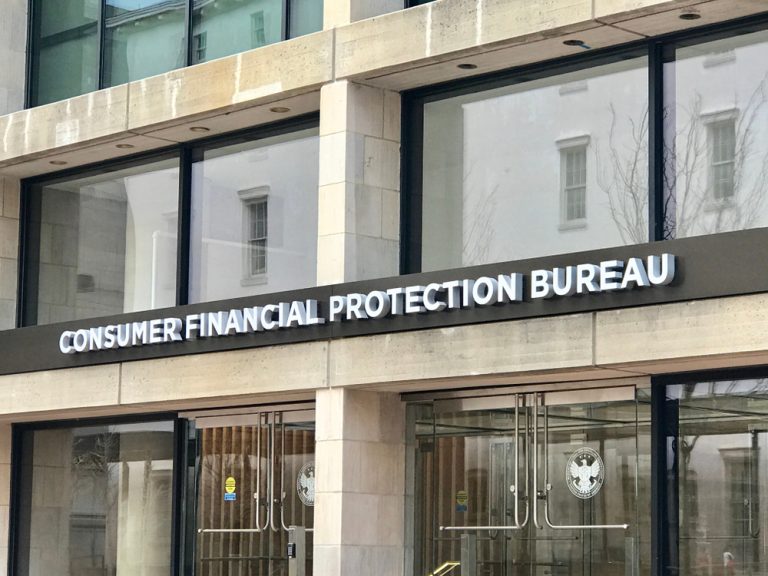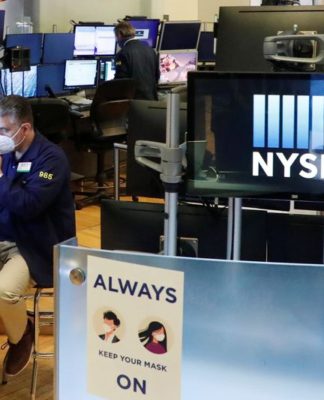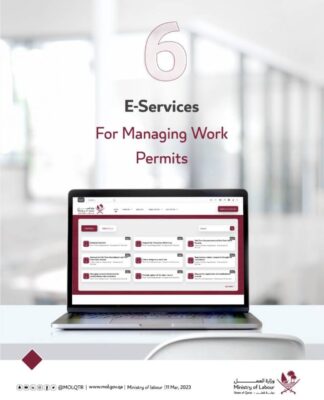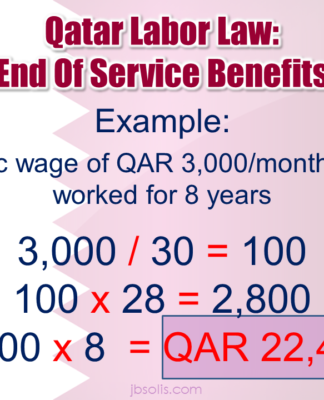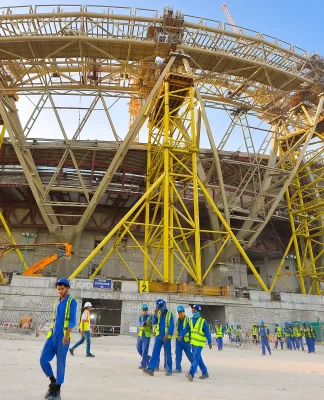30% of US Construction Firms Invest in Digital Payments Amid Housing Slump
BY PYMNTS | MARCH 2, 2023
|
Construction firms facing lower housing starts and rising mortgage rates that are turning off potential home buyers are increasingly turning to digital payment solutions as a way to increase cash flow and clear accounts receivable (AR) faster and cheaply.
This is analyzed in depth in “Building Better Cash Flow In Construction With Digital Payments,” a PYMNTS and American Express collaboration, and the January/February edition of the B2B and Digital Payments Tracker® Series, detailing the pressures construction firms face and how they’re responding by greater reliance on digital tools.
Per the report, “Getting paid on time is a major roadblock in the construction industry, disrupting cash flow for U.S. construction professionals. Only 11% of construction professionals say they are paid in full on every job, and the impacts can be devastating,” adding that 97% of construction professionals are strained due to slow payments and cash flow issues.
Digital payments tech is alleviating some of these headaches, as more companies in the sector come around to the speed and operational efficiency of digitizing, specifically around AR.
construction firms
“Almost half of middle market professionals surveyed said investing in technology was a top priority over the next 12 months, with four in 10 increasing their budget specifically for adding technology,” according to the Tracker. “Automation is a focus area for 36%, with 30% deploying it to streamline back-office processes, such as cloud-based accounts payable (AP) tools. On the accounts receivable (AR) side, manual processes create pain in the construction sector, with 26% of firms viewing manual processes as a challenge.”
As late payments constituted 12% of construction costs last year — eating into profits for these companies — the report notes that the sector is digitizing more rapidly in 2023.
“According to PYMNTS’ research, the construction industry is averaging roughly five technologies to be rolled out in the next year,” per the report, which adds that “contractors are overwhelmingly aiming for faster payments and easier cash flow management. PYMNTS’ research found 33% were planning to adopt integration between AP and AR and 31% plan on adding instant bank verification and virtual cards for making payments to suppliers.”
Get the report: Building Better Cash Flow In Construction With Digital Payments
PYMNTS Data: Why Consumers Are Trying Digital Wallets
A PYMNTS study, “New Payments Options: Why Consumers Are Trying Digital Wallets” finds that 52% of US consumers tried out a new payment method in 2022, with many choosing to give digital wallets a try for the first time.
RECOMMENDED
Payments Orchestration Saves Merchants Time, People and Money
Investors Withdraw $6B From Binance Coin Amid Crypto Crackdown
Payments Data Platform Pagos Raises $34M to Build Out Its Solution Suite
Digital Restaurant Engagement Rises Despite Delivery Downtick
SEE MORE IN: ACCOUNTS RECEIVABLE, AMERICAN EXPRESS, AUTOMATION, B2B, B2B PAYMENTS, CONSTRUCTION, DIGITAL PAYMENTS, ECONOMY, FEATURED NEWS, LABOR, NEWS, PAYMENTS, PYMNTS STUDY, THE DATA POINT, WHAT’S HOT IN B2B
CFPB Finds Most BNPL Users Are Not Financially Distressed
BY PYMNTS | MARCH 2, 2023
|
BNPL users have relatively few financial safety nets in place should they run into difficulties managing their obligations.
That’s an if and not a when, but borrowers are more financially stretched than non-buy now pay later (BNPL) users.
A new report from the Consumer Financial Protection Bureau notes that many BNPL users use the option without signs of stress. But some signs bear watching.
The CFPB found that there are some advantages of using installment options, particularly for consumers with less than prime credit. BNPL borrowers had an average score in the sub-prime category (credit scores of 580-669).
“Lower credit scores lead to higher interest rates on traditional credit products, which makes Buy Now, Pay Later loans with no interest an attractive alternative that many borrowers seek,” wrote the CFPB.
The report “Consumer Use of Buy Now, Pay Later Insights from the CFPB Making Ends Meet Survey,” says that “a majority of BNPL borrowers would face credit card interest rates between 19% and 23% annually if they had chosen to make their purchase using a credit card.”
Growing Use and Growing Appeal
The CFPB’s findings come a year after and underscore PYMNTS’ own revelations about just who wants to use BNPL and why. In “The Second-Chance Consumer: How Buy Now, Pay Later Creates New Merchant Opportunities, a PYMNTS and Sezzle collaboration, we found that “second chance” consumers (as much as 23% of the population) want to use credit to get what they need — and we note that they are desirable customers for all manner of merchants. Of those consumers, 65% percent earn more than $50,000 per year, with 30 percent earning above $100,000. The average second-chance consumer, we found, has a FICO score of 662, which sits within the aforementioned CFPB range. And of these consumers surveyed by PYMNTS that are using BNPL, 70% say installment, no interest options help them shop without overspending.
PYMNTS data shows that BNPL still has but a small slice of the transaction pie. The payment method has a consistent 1.1% of overall digital transactions. The installment method holds appeal among consumers with lower credit scores. And elsewhere, our data shows that BNPL is relatively more popular with middle-income consumers, who paid for 1.5% of all their retail purchases this way.
What Bears Watching
As for the trends that bear watching: The CFPB finds that many BNPL users have lower liquidity and savings on average compared to consumers who did not use BNPL.
Though most BNPL users and not currently financially distressed, some are. The CFPB found that approximately 25% of BNPL users and non-users alike have “zero credit card liquidity,” but 6% percent of BNPL users compared to 3% of non-users with a credit card have negative liquidity, “meaning that their debt balances on all credit cards are higher than the sum of their credit card limits, indicating particularly high levels of indebtedness among these consumers.”
Drilling down into the data, the CFPB found that BNPL users have, on average, $11,981 less in non-retirement savings and cash compared to consumers who did not use BNPL in the previous year.
“They also have $4,057 less liquidity available on credit cards,” noted the report.
Generally speaking, the CFPB found that BNPL-using respondents had higher levels of credit card debt and rates of credit card utilization compared to non-BNPL users.
They are also likely to use a range of credit options than peers — 95% of BNPL borrowers do so. As many as 18% of BNPL users, the data shows, were delinquent on at least some form of credit product, compared to 7% for non-users. A total of 69% of BNPL borrowers were revolving on at least one credit card.
“The data in this report do not allow us to distinguish the direction of causality — namely whether consumers in distress are more likely to use BNPL, for instance, in order to substitute away from high-interest loans that they already have, or whether BNPL use leads consumers to increase borrowing using other non-BNPL products. This question remains an important area for future research,” said the CFPB.
It’s a coda that signals that only time will tell how BNPL users might ultimately fare.














